Years ago I worked as a teacher at a 6000+ acre wilderness education center in northern Minnesota. While there I learned, and then taught many classes to teenagers related to natural history and wilderness survival skills. We learned how to use a compass, read a map, build an emergency shelter and make a fire among other things. Since leaving there I seldom give much thought to these skills, happily tucking them away in the back of my brain, hoping to never have to use them.
Recently I was reminded of all of these skills when I read a book ( by author, D Dauphinee called When You Find My Body) about a woman named Geraldine (Gerry) “Inchworm” Largay who was thru-hiking the Appalachian Trail when she became lost after leaving the trail to go to the bathroom and then, amazingly, never finding her way back and actually DYING in the woods. You may recall seeing this in the headlines in the summer of 2013. Her disappearance remained a mystery for over two years until surveyors stumbled on her camping site and decaying bones. She was just 2,100 feet from the Appalachian Trail, in the dense forest of Maine where years earlier, for many days, hundreds of searchers and volunteers had unsuccessfully attempted to find and save her. What went wrong? What steps could she have taken to save herself or help those out looking for her? What can we all learn from her story? These are some of the questions the author, and likely all reading the book, explore.

I know many reading this are like me in that you enjoy the outdoors. Probably you spend time hiking, canoeing, camping, possibly even backpacking. I don’t write this post to scare you from continuing to participate in those things, but I write because Gerry’s story haunts me. My heart breaks for those involved in Gerry’s tragedy and I want you and everyone you know to be armed with some basic information that Gerry lacked. Information that could have prevented her tragic end.
Have you ever thought about what you would do if you were hiking and found yourself lost? If you ventured off the trail and then somehow couldn’t find your way back? What would you do?
The first thing you should do if you ever get lost, or find yourself disoriented while hiking is to stop and admit that you’re lost.
I’ll say that again– Admit that you’re lost.
For many of us this may be difficult. But in moments like this we need to realize no one is perfect, everyone makes mistakes, getting lost can happen to anyone. It might help to remind yourself that yes, you are capable, smart, competent. You CAN figure a way out of this situation. So just go ahead and admit that yes, you are temporally disoriented. Then use the letters in the word stop. S.T.O.P. Each letter of this important word tells you what to do so it’s easy to remember. You should 1.Stop walking. 2.Stay calm. 3.Think. 4.Observe. And finally 5.Plan.
The biggest mistake Gerry made when she found herself disoriented was try to get to higher ground where she thought she might have a cell signal so she could call for help. This seems like something any of us might do in our modern age of technology. We rely so much on our cell phones that when in trouble, it’s easy for it to be the first thing we turn to to help us out. But often in the wilderness cell signals are spotty or non-existent. We need instead to rely on and trust in ourselves. If calm, we CAN figure it out and get out of the situation. Gerry likely panicked and focused her energy on walking somewhere to get a cell signal. What an easy mistake to make! Tragically, in doing so she moved farther from where she left the trail, into dense vegetation and difficult terrain. She continued trying to find a cell signal for some time, each moment and step taking her farther and farther from where she needed to be to be found.
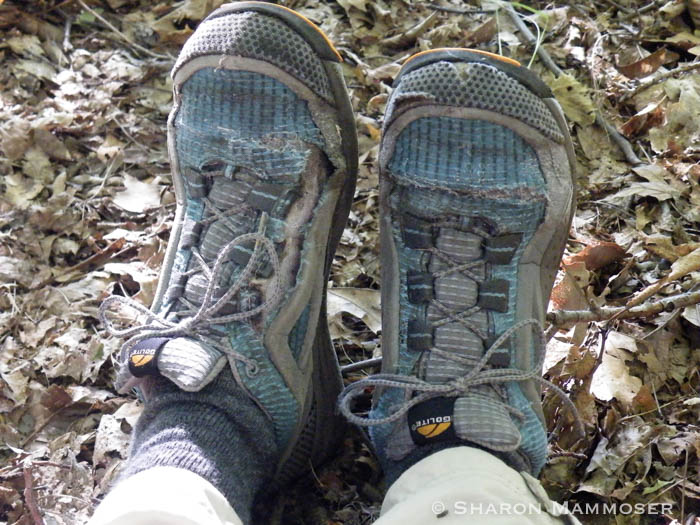
By STOPPING after admitting to yourself that yes, you’re lost, you can minimize your distance from where you started or where you became lost. Sit down and do your best to STAY CALM. Not panicking is the most important thing as when we panic we often don’t think straight and then, desperate to right our wrong, we may make bad decisions as we hurry through the woods in desperation. So if you find yourself lost, stop walking. Sit down and do your best to stay calm. Then, THINK about where you were and where you are now. Do you recognize any landmarks? Can you remember anything that may jog your memory as to what direction is the right way? How long did you walk away from the trail? 5 minutes? 15 minutes? Why directions were you walking? Do you remember anything? OBSERVE your surroundings. And then, calmly, make a PLAN.
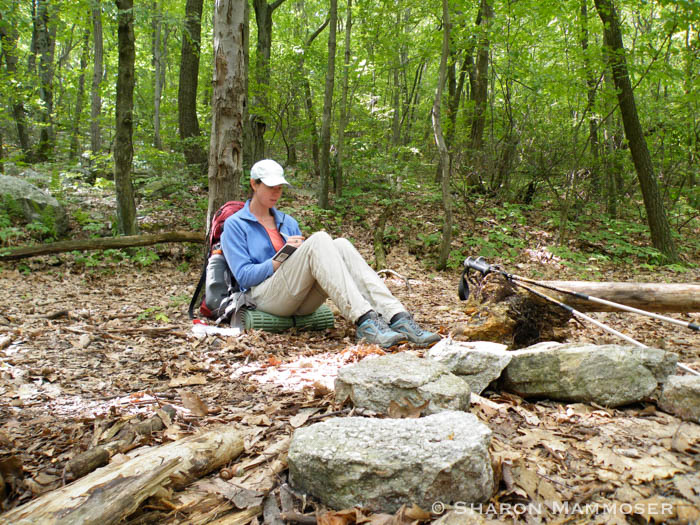
Your plan is going to depend on your circumstances. It’s not one size fits all. Does someone know your plans–where you started, when you expect to be done? If the answer is no, then sitting still and waiting for help is going to be pointless. People will only look for you if they know you’re missing! If someone does know your plans, when are you expected back? In two hours? Two days? Two weeks? This also makes a difference as the more time that passes, the worse off you’ll be (unless you happen to have a lot of food with you.)
If after sitting still long enough to catch your breath, you lack a plan, consider making a waypoint marker for yourself so you can scope out the area. A waypoint marker is just something that will help you return to where you are now. A bright piece of clothing, a bandana, a piece of tape, a scarf, whatever you have will work fine. Just tie it high enough that you can see if from some distance away. Then walk in any direction, always keeping your waypoint marker in your sights. As long as you can still see that, you’re free to go as far as you want. Maybe you’ll recognize something you passed. Maybe you’ll hear people or see something that jogs your memory.
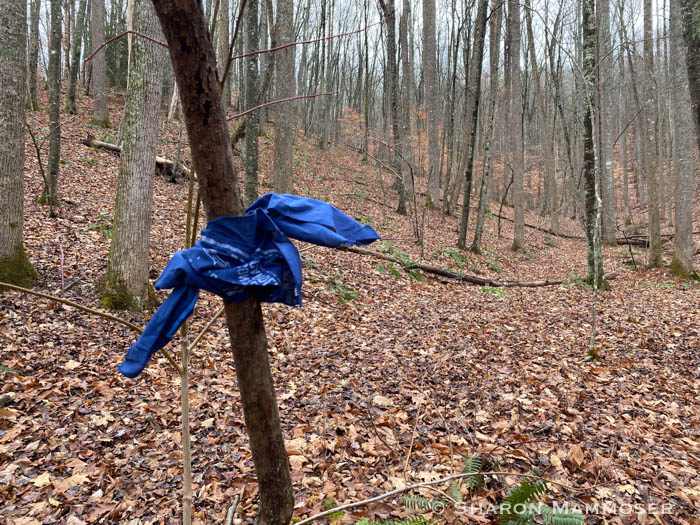
If you recognize something and are pretty sure you know what way to go to get back to the trail, go that way. You can always make another waypoint for yourself so if you’re wrong, you’ll be able to return to where you first found yourself lost. Use waypoint markers to travel through the woods, hoping to find something to help you find your way.
After Gerry desperately tried to get a cell signal and when she had really become disoriented, she finally realized she should just stay put and wait for help. The problem with that thinking was that by then she was really in the deep woods, far from where she’d left the trail and not in a very visible spot. She set up a tent under a hemlock tree and had several unsuccessful attempts at making a fire to signal searchers. Then she waited, likely thinking someone would find her.

And people were looking for MANY days. After several days of no one finding her, there were things Gerry could have done to take matters into her own hands and as Jessie Graff from American Ninja Warrior says, “Be your own hero.”
So the takeaway here for you is that yes, it’s usually best if you find yourself lost to stay put. But for how long? At some point if no one comes to rescue you, you’ll have to be prepared to make some decisions. Have you gone through your stuff? How much food and water do you have? Do you have a way of treating water? What tools are with you? Do you have a compass? Matches? A Lighter? Can you start a fire? Do you have a whistle? Tent? Warm clothes? What’s the weather like? Can you save yourself? What things could you do to help the people out looking for you?
My next post will feature things you can do if you ever find yourself lost –after waiting for help that never comes. What can you do if help hasn’t arrived? Do you have what it takes to be your own hero?
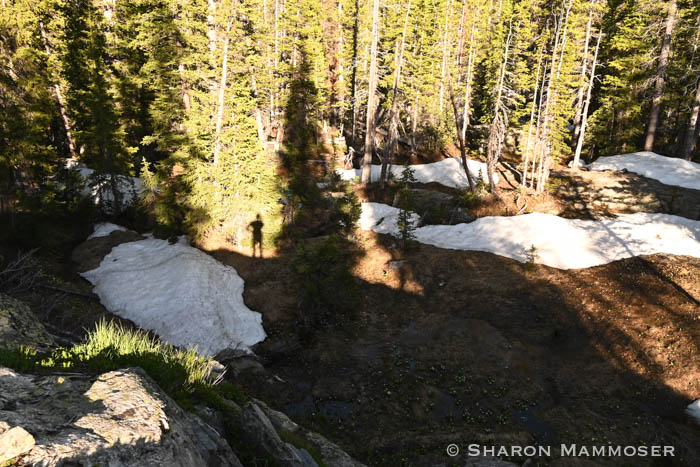
I would love to hear from you. Have you ever gotten lost while hiking? How did you find your way out?


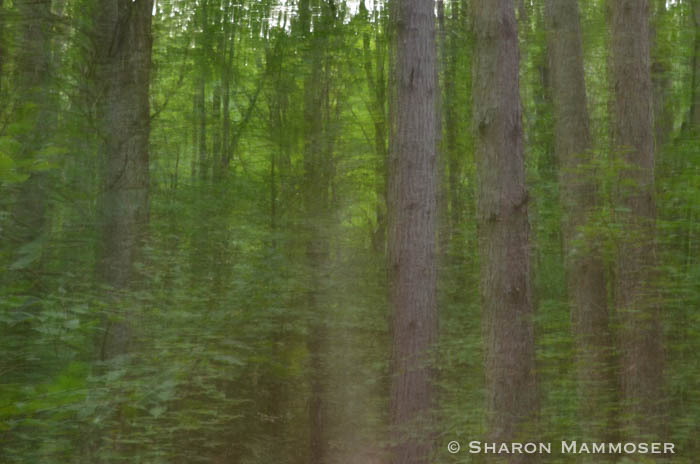
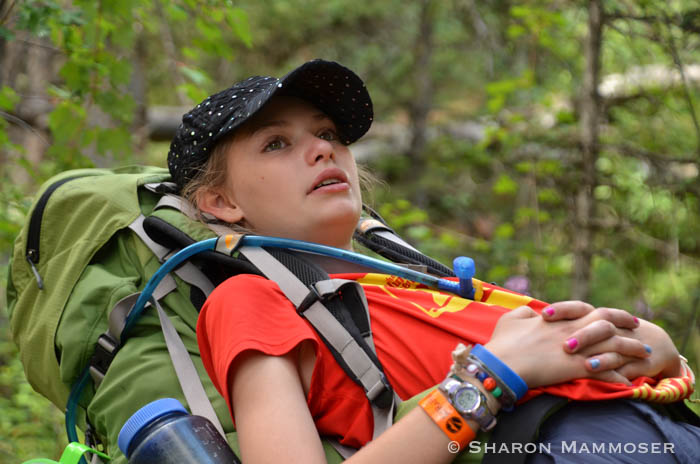
This article is far from a mediocre topic, Sharon, and I’m so glad you wrote it. Getting lost can happen VERY EASILY. I went on a naturalist club outing on a hot, sunny August day a few years ago to hike through the rock barrens in a newly established wilderness park in the Pre-Cambrian Shield of Ontario where I had never been before. After I had stopped to photograph a scene, and expected to see the trailing end of the other hikers, I tried to find where the trail was, but I could not see or hear anyone. When I had hiked with a hiking club in a park where the trails were worn, I tagged along near the end and took photos quickly, but despite the open nature of the barrens, I realized I was in trouble and blew hard in blasts of three on a shrill whistle until someone came back to get me.
Sure, I wanted a photo typical of the barren ground succession of the colonizing ground cover, but my judgment was faulty, caused by heat- and light-triggered migraine.
Hey Murray, Thanks for reading. Good thing you were carrying a whistle with you! This is a great, and essential thing to have on all hikes–thanks for bringing it up. I’m glad your story ended well. Thanks for sharing, and Happy New Year to you!
I was walking the AT and somehow ended up walking along an old section no longer in use and it petered out to nothing. By the time I realized it wasn’t a viable trail, I had followed some open areas or animal paths to a point that I couldn’t even find my bogus trail to get me back to the AT.
I set down my pack, my waypoint marker. And I walked ever larger circles around it keeping it in sight.
I found the bogus trail after maybe 45 minutes and much worry and was able to follow it back to the AT.
Hon, I’m glad you were able to find your way back. Getting lost or temporarily disoriented is easy to do and it can happen to any of us. Thanks for sharing your story and for always reading.